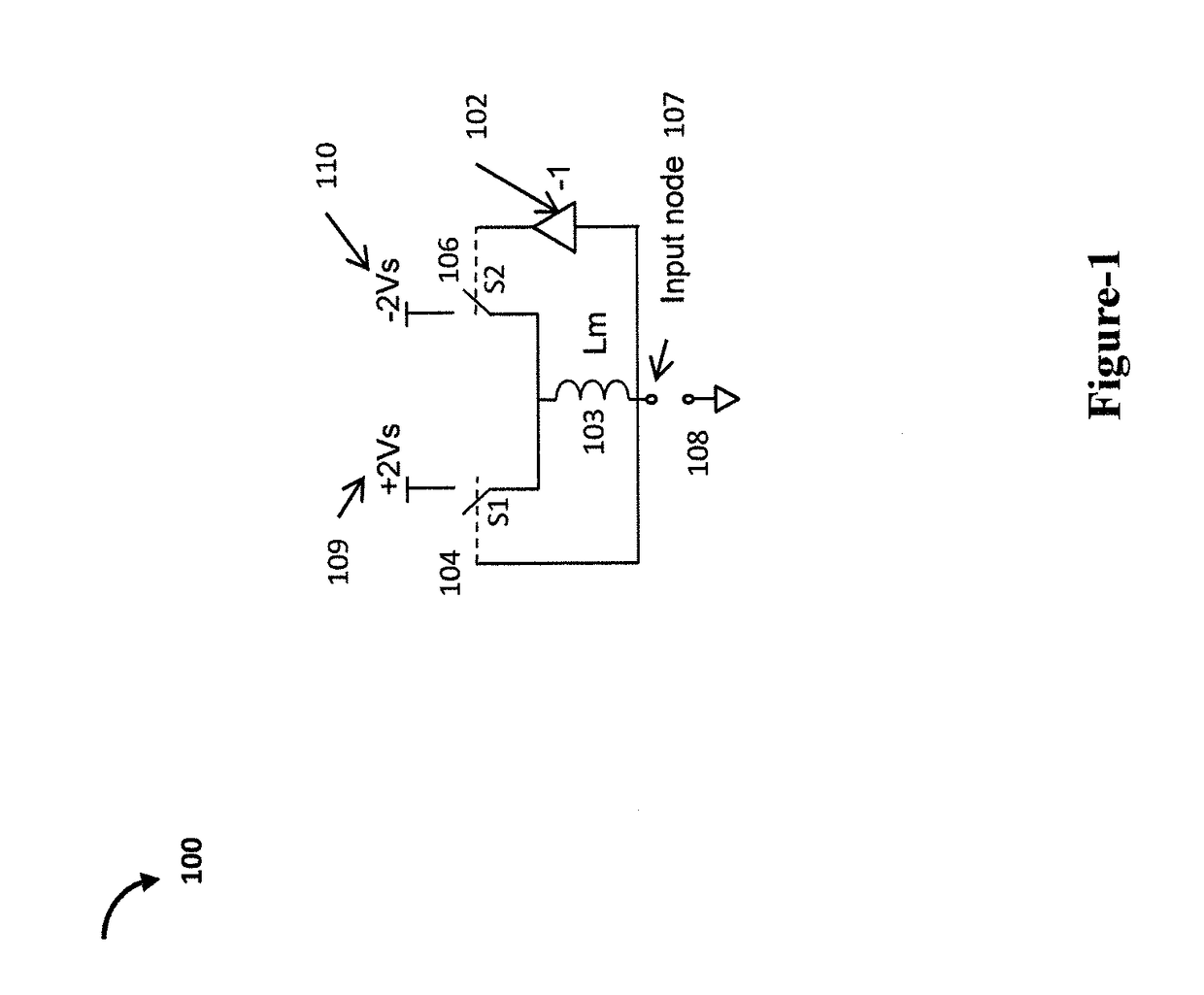Switched mode negative inductor
a negative inductor and switch mode technology, applied in the field of circuit synthesis, can solve the problems of inconvenient use, inconvenient operation, and inability to achieve full-size antennas on mobile platforms such as aircra
- Summary
- Abstract
- Description
- Claims
- Application Information
AI Technical Summary
Benefits of technology
Problems solved by technology
Method used
Image
Examples
Embodiment Construction
[0026]It should be understood at the outset that, although example embodiments are illustrated below, the present invention may be implemented using any number of techniques, whether currently known or not. The present invention should in no way be limited to the example implementations, drawings, and techniques illustrated below. Additionally, the drawings are not necessarily drawn to scale.
[0027]The principles of this invention is the synthesis of negative inductance circuits that can provide for efficient high power and broad band performance. Negative inductance can be illustrated by the following equation:
[0028]dIdt=VL<0(1)
[0029]where I is the current through the device, t is time, V is the voltage across the terminals and L<0 is the inductance.
[0030]An embodiment of the present invention is a circuit that synthesizes a negative inductance in a switching mode. In an embodiment of this inventive concept, the negative inductance behavior is observed when driven by a voltag...
PUM
 Login to View More
Login to View More Abstract
Description
Claims
Application Information
 Login to View More
Login to View More - R&D
- Intellectual Property
- Life Sciences
- Materials
- Tech Scout
- Unparalleled Data Quality
- Higher Quality Content
- 60% Fewer Hallucinations
Browse by: Latest US Patents, China's latest patents, Technical Efficacy Thesaurus, Application Domain, Technology Topic, Popular Technical Reports.
© 2025 PatSnap. All rights reserved.Legal|Privacy policy|Modern Slavery Act Transparency Statement|Sitemap|About US| Contact US: help@patsnap.com



